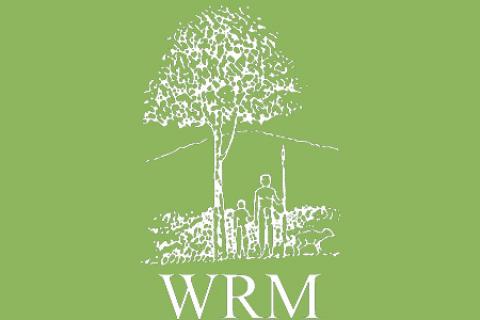The commune of Lumaco, with its 11.405 inhabitants, is located in the Ninth Region of Chile. From the standpoint of the ancient Mapuche territoriality and the present Mapuche claim to territorial identities in this Region, Lumaco corresponds to the political centre of the Mapuche-Nalche (also known as “nagche” and “nag-che”) territory.
Bulletin articles
The Motilon Bari Indigenous Peoples have been settled for thousands of years in the basin of the Catatumbo River, in the Department of Northern Santander (Colombia). It is a forest zone, covering an area of approximately 126,600 ha and shares its frontier with Venezuela. Its humid forests, that act as a natural filter for Lake Maracaibo (Venezuela), have considerable potential regarding biodiversity, wood and minerals, hydrocarbons and water resources.
On 13 May, over 400 young people of both sexes participated in an action against the plantations of the Japanese EUCAPACIFIC Company in the area of Tortuga, located in the Muisne Canton, province of Esmeraldas (see power point presentation of the action at http://www.wrm.org.uy/paises/Ecuador/Muisne_sin_eucaliptos.pps)
To the south of the Yasuni National Park (see WRM Bulletin No. 96), an unequal battle is being fought. Spears against shotguns.
The Yasuni National Park covers an area of 982,000 hectares. It is located in Huaorani territory and is part of the Intangible Zone where peoples of the Tagaeri and Taromenane ethnic groups live in voluntary isolation.
In 1729, Jonathan Swift –who devoted much of his writing to the struggle for Ireland against English rule- published his satire “A Modest Proposal for Preventing the Children of Poor People in Ireland from Being a Burden to their Parents or Country, and for Making them Beneficial to the Public” (he suggested that they should be well fed and then eaten). Had he been alive today, he would have probably had something satirical to say about the US government and Earth Day (April 22).
The New Zealand Institute of Forestry is organizing its 2006 conference under the title of “absolutely positively forests”. Although the title is open to discussion about its true –and probably very profound- meaning, our understanding is that it could either mean that the meeting will: 1) be absolutely and positively focused on forests or 2) will try to convince everyone that Radiata pine plantations are absolutely and positively forests.
The Eighth Conference of the Parties of the United Nations Convention on Biological Diversity ended on March 31st with two important and related decisions: an upholding of the moratorium on the use of so-called “terminator technology,” and a recommendation that countries exercise caution when approaching the potential use of genetically engineered trees. The issues became related during the deliberations over the issue of extending the moratorium on the use of the dangerous “terminator technology,” the genetic engineering of plants to produce sterile seeds that cannot be replanted.
The Omo National Park in Southern Ethiopia is being taken over by the Dutch conservation organization, African Parks Foundation (APF) and 50,000 tribal people are in danger of being displaced and/or of losing access to their vital subsistence resources.
The 1570 square mile Omo National Park is home to the Suri, Dizi, Mursi, Me'en and Nyangatom tribal peoples. These tribal peoples live in or use nearly the entire park for cultivation and cattle grazing. They have made this land their home for centuries.
The Omo Forest Reserve –located in the South west of Nigeria- was legally constituted as a forest reserve by Order No. 10 of 1925 and the Order was amended in 1952. The forest was practically unexplored by then. The forest was ceded to Government for reservation on the 8th of October, 1918. The agreement was made between the District Officer, Ijebu Ode on behalf of the British Colonial government and the Awujale of Ijebu Ode on behalf of the Ijebu Native administration.
As part of a two-year process to review FSC policy on the certification of timber plantations, members of the policy review working-group (PWG) recently visited South Africa for their final meeting. What follows are some quotes from the report on the field trip to visit plantation areas, produced by Wally Menne (member of the local Timberwatch Coalition).
Aung Ngyeh, a 31 year old Karenni, fled to Thailand in 2002, forced out of his home in Karenni State by the Burmese military’s war against ethnic populations. He now lives in the refugee camp along the Thai border working with the Karenni Development Research Group (KDRG) campaigning to stop foreign investment in the Burmese regime’s “development” projects.
When the British invaded India 250 years ago, they found the sub-continent covered with a mosaic of vegetation they did not comprehend. Tall dark trees, gnarled and knotted creepers, wild grasslands…the sheer tropical abundance of India’s forests shocked, overwhelmed them. Ultimately, forests came to signify a number of simpler issues (or things): snakes, tigers, barbarians/rebels, pests, and adventure. British colonizers/traders never neglected the mundane and practical, though, which lay beyond this ‘exotic’ and ‘orient’.
